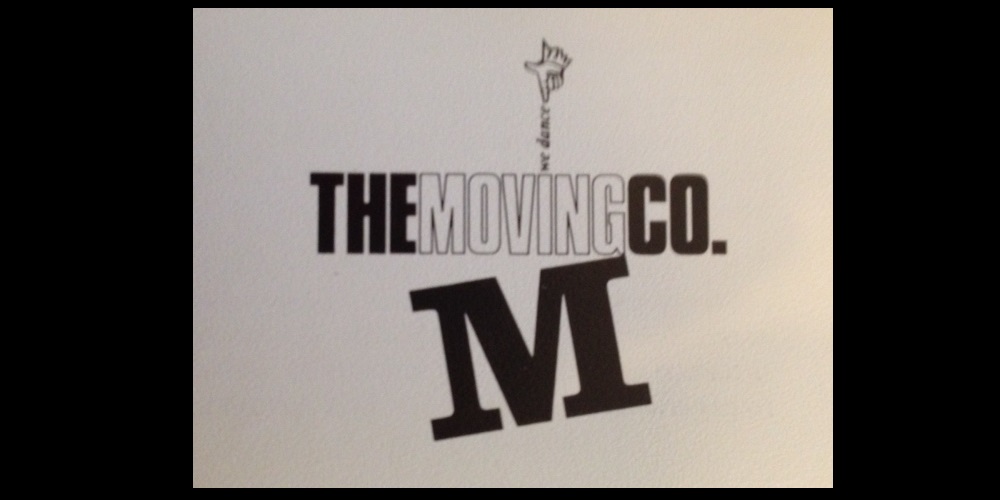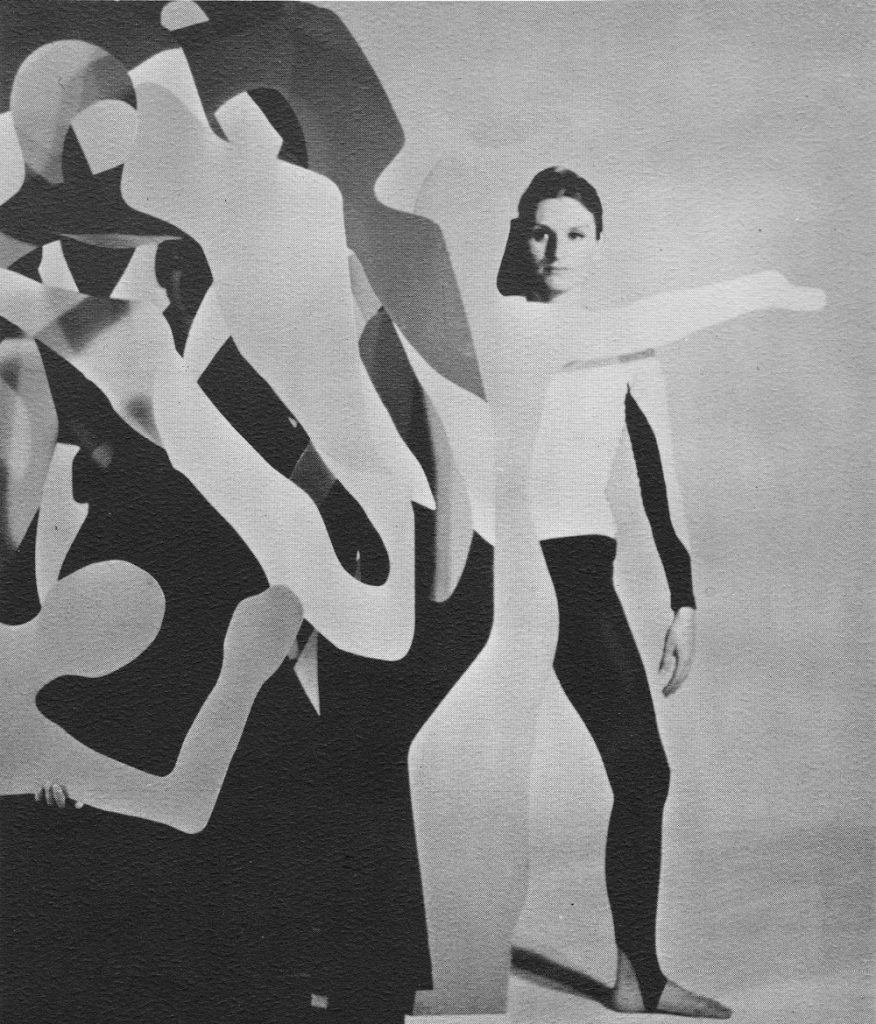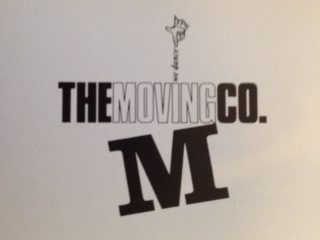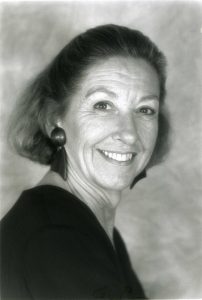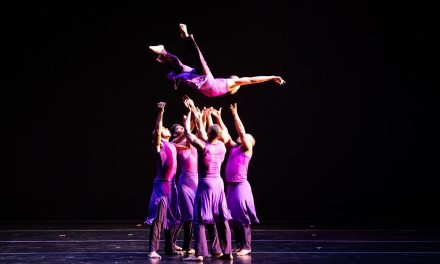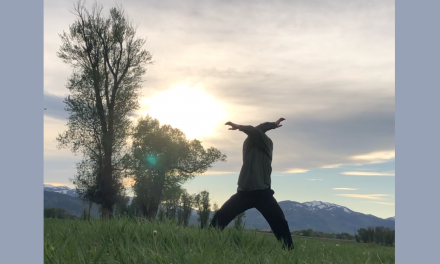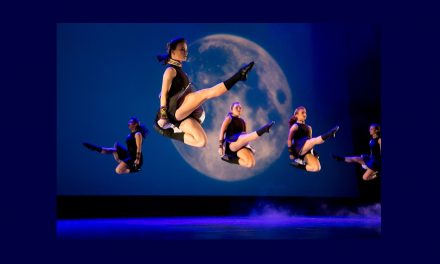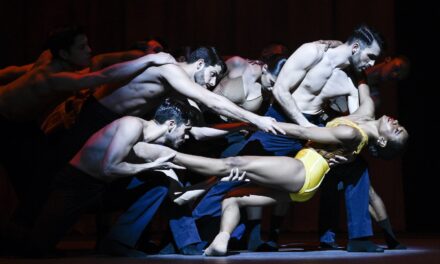THE MOVING CO. That was our name. We were the first Moving Co. but even though we had a legal DBA on the name others started popping up…The San Francisco Mother Goose Moving Company, The Santa Monica City College Moving Company, and another one in Chicago. Someone even stole part of our logo. We were a small modern dance company of 7-9 dancers in the 1970’s, and I was a Professor at Cal State Los Angeles at the time. We all know what a dance company is, but all companies are not built the same way. Here is our story:
Previously I had been the founding producer/manager of the Bella Lewitzky Dance Company and although I was extremely fond of Bella and her work, I had to come to the conclusion that at that point in my life I didn’t want to be a manager. I wanted to choreograph and realized that my favorite place to be was in the studio/theater with dancers.
When Bella’s company was first formed, she did not have a studio. She had ‘been there-done that’ with the Horton Studio, so rehearsals were all over L.A., often on campuses with no place to park. I found it to be a logistical nightmare.
I wanted a studio of our own. The problem then as always was the amount and price of square footage necessary, and the requirement for having a floor with give. It was older buildings in not necessarily the best parts of Pasadena that met these requirements.
Our first “sort of” studio was in the old Green Hotel in Pasadena. It had badly splintered hardware floors, which my husband sanded and finished. We started rehearsing and teaching classes immediately. The dancers who taught were paid half of what came in from their classes. The other half went for overhead. This paid off tremendously in the long run, as by the time we were ready for the NEA’s Artist In Schools Program, the company had strong teachers in depth. And although dancers were not paid for rehearsal time, they were able to earn some income along with gaining experience.
Life in that first studio was not simple. It became very cold the first winter. The owner-manager of the building was a very round woman who wore a ratty fur coat & a red rose in the middle of her forehead. When I told her of our lack of heat problem, she looked me in the eye and said, “well just tell those dancers to dance a little faster dearie”. My response was YOU tell those dancers…. We put in our own space heater.
From there we moved to an abandoned Masonic Temple. Again, we refinished the floor. I don’t know what those Masons did in there, but it was a nice big space with a little low balcony, perfect for dogs – yes dogs! In the basement two floors below, us was a re-hab place for drunks (that we didn’t know about when we moved in) who sometimes stumbled up to our door rather than down. Consequently, we had to schedule either my Standard Poodle, or one the dancer’s German Shepard at our rehearsals, but never at the same time or we would have had war. The amazing thing was that both of them would nap unless one of the drunks barged in whereupon they would bark like crazy. They never barked at a dancer or even a new student. However, I found that having to schedule a dog along with dancers was a bit much, and it was not the best place for young students or us really, so we moved from almost skid row to Church.
The minister had started life as an actor and was enormously supportive. Not only did we have a studio, we had a real office and storage space. This time we rolled down a Marley floor and we were in business again. Before the office, the company phone was in our home. My husband almost never touched it, but one day I came in and heard him say “they wouldn’t like that… they are dancers”. It was the Department of Transportation who had called and wanted to inspect our vehicles!
Why all this chatter about studios? We were fairly unique at the time. We taught only modern and an occasional ballet class and never did student ‘recitals’, yet the studio flourished and so did the company. Eventually were so busy performing, that we had to hire outside teachers to keep the studio going.
We thrived in our church studio twelve months a year. Meanwhile through all the studio moves we were consistently developing repertory and were performing more and more outside booked concerts. We only self- produced the first one. We became the most booked company for ‘Performing Tree’ out of the LA Music Center, ultimately performing more than a hundred children’s narrated concerts & teaching in schools. Although theater concert work was what we were really about, these shows allowed me to pay dancers which was very important to me and to them. It was also excellent experience. We all learned a lot from them. There was a huge difference in schools. In some, the children were allowed to move with us in their seats, laugh and have a good time. In others it was like they were in strait jackets. In one school, in the middle of the show, a teacher marched a happy cute little girl out, and returned her to her seat with her mouth taped shut. It took everything I had not to walk out on the spot, and to this day I wish I had. The saddest was performing for handicapped students, they wanted so badly, and tried so hard to move while watching us that I found it hard to talk.
You never knew what you were going to find. One time I was ready to start a lecture demonstration in a high school gym with about 1500 students, when I happened to turn around and saw faculty putting chains with padlocks around the crash doors! That time I flat out said…”You lock us all in here and we are out of here. Now. They argued but unlocked the doors. We started performing in bedlam, and within minutes they were silent. We never lost a student audience of any age.
Another time we were doing a formal concert on stage in front of a big audience when mid concert, we found the police backstage with us ready to escort us out. It seemed that there was a riot on the street out front, and not a single person working front of house. It is said to “never assume’, and after that I didn’t. Part of our contract included a guarantee of front-of-house personnel throughout the performance.
Those are the very few horror stories. We performed in theaters throughout California and almost all were wonderful if not sometimes harried experiences. Our last big performance was at the Redlands Bowl. We had performed in many big houses, but that one was enormous.
Our repertoire was varied including serious social comment works such as Summer For Tomorrow & Algorithms, up-beat fun dances such as A Tee Hee’s Egg In A Ha Ha’s Nest & Grauman’s Chinese, and others in between like Zyzzix Road & Dance To A Night Pulse. I particularly liked to use slide projections to produce an environment in which to integrate the dancers. Our style was not main stream at the time. We carried few ‘dancy’ dances but were very well received by audiences and the press. Initially the choreography was all mine, but later we carried works by several of the company members. We also did many improvisational performances in unlikely spaces. That was one of our strengths.
The seventies was a good time for dance companies because of the support of the National Endowment for The Arts. We were selected for their ‘Dance Touring Program’, based on number of performances, and Artist In Schools Program, based on quality of teaching and performing. We also had strong support from the California Arts Council, LA County Cultural Arts Commission, businesses and industry.
By the end of the 1970’s we were booked in Boston and our first national tour was being scheduled. We were thrilled. This is what we had been working so hard for all those years. Then stark reality hit. No matter how good one was at receiving grants, or how carefully one budgeted, the fact of the matter in the dance business was that there was always a deficit. It is still true now. More success leads to more expenses, to a bigger shortfall. Additionally, although my company dancers were always paid for performances, they were not on salary which extensive touring would require. It was frightening to face the responsibility of supporting ten people. Although we had good earned income, and received lots of grants, I had always made up the deficit out of my University income. Of course, if I was on the road I would have no such income. Although my husband was enormously supportive I felt that I simply couldn’t cause the whole family to live in poverty including his kids who were almost ready for college. So, I took the company off of the market. We couldn’t just stay home marking time with the status quo. It was worse than a divorce. I felt terrible for the dancers who had been so loyal, some for eight years, but I couldn’t pull money out of the blue.
As every dancer knows, a company becomes like a family, some dysfunctional, others like mine, although we had our moments. was a warm, closely knit unit. Breaking it up was awful, but I did everything I could to help the dancers with their future careers, and ultimately it turned out well. Many went on to very successful careers in the business, although by now most are retired. Nancy Kupka became a dance professor at CSULB, Pat Debenham was a mainstay of the dance faculty at Brigham Young University, Cindy Quinn performed on stage and in film and is still Associate Director of Momix, Nannette Brodie taught at Golden West College and has her own company, Dan Shapiro danced with Murray Louis before forming the Shapiro Smith dance company with his wife Joanie in New York. Last I heard, Chris Erickson was doing her own stand-up comedy show. I am sorry to have lost Christina Botiller-Feliz. She was with the company from the first to last day. Likewise, I have lost touch with dancers Marty Loughrie, Mary Jo Buhl, Merryl Von Woy, & Lee Baker. There are many other dancers, musicians, costume designers and technicians whose talented input was very important to the company for shorter periods of time.
Lighting designer Tom Ruzika, who helped bring my dreams to reality still runs his own highly successful lighting company. Craig Kupka, our music director/accompanist/composer had a big career teaching in Glendale and performing. Cliff Nelson our graphic and set designer was a fine artist. I am still extremely fond of all these wonderful people. We worked hard but also had a lot of fun.
It was exhausting and exhilarating and at the bottom line, a great decade in my life. Afterward, I had the opportunity to spend two exciting years in Saudi Arabia and traveling the world with my husband who survived all of this… another story for another time.
Written by and Submitted to “Stories From the Inside” by Pat Finot, April 6, 2020.
Pat Finot, CSULB Professor Emeritus, taught in the California State University system for forty years: thirteen years at CSU Los Angeles, twenty-two years full-time at CSU Long Beach, and five additional years part-time at CSULB after retiring in 1999.
A former Chair of the Department of Dance, Professor Finot was Production Coordinator/Concert Director, and taught graduate and undergraduate courses. In the 1970’s, she was responsible for obtaining degree-earning status for dance in the CSU and was a co-creator of the BA, BFA, MA, and MFA Degree Programs. She also wrote the College of the Arts’ Graduate Arts Management Program. Among many University grants and awards, she was honored as the University’s Legacy Lecturer in spring 1999.
Professor Finot was the founding Producer/Manager of the Bella Lewitzky Dance Company. Subsequently, she was Artistic Director/Principal Choreographer of The Moving Company, a modern dance touring company, selected as one of twenty companies in the country to participate in the National Endowment for the Arts’ Artists In Schools Program, and included in the NEA’s prestigious Dance Touring Program. The company was also an active participant in Performing Tree out of the Los Angeles Music Center.
Professor Finot was the founding President of the California Dance Educators Association, served on the board of the Western Division of the Association of American Dance Companies, and on the national board of the American College Dance Festival Association. She was a founding member of Phi Beta Delta, the Society for International Scholars and with, Tom Ruzika, co-authored the chapter: “Technical Theatre: Its Relationship to Dance Theatre” in the book Dance, The Art of Production.
Professor Finot experienced an exciting and complex career in both the professional and academic arenas, encompassing the artistic and administrative challenges of the field. Within this mix, her first love was life with dancers in the studio and in the theatre, which after all… is what it was all about.
*****************************************************
**If you are a dance professional and wish to submit a writing to “Stories From the Inside”, please also include a short bio, high definition photos, and a head shot of yourself. Send these to info@ladancechronicle.com.
Our policy is: Your writing belongs to you. If we deem it necessary to edit your content we will seek your approval prior to publication. Please only submit content that you know can be published by LADC. There is no compensation for these stories as no one at LADC is being paid for this project. It is a labor of love for our art form.
Featured image: The Moving Company logo – Courtesy of Pat Finot

